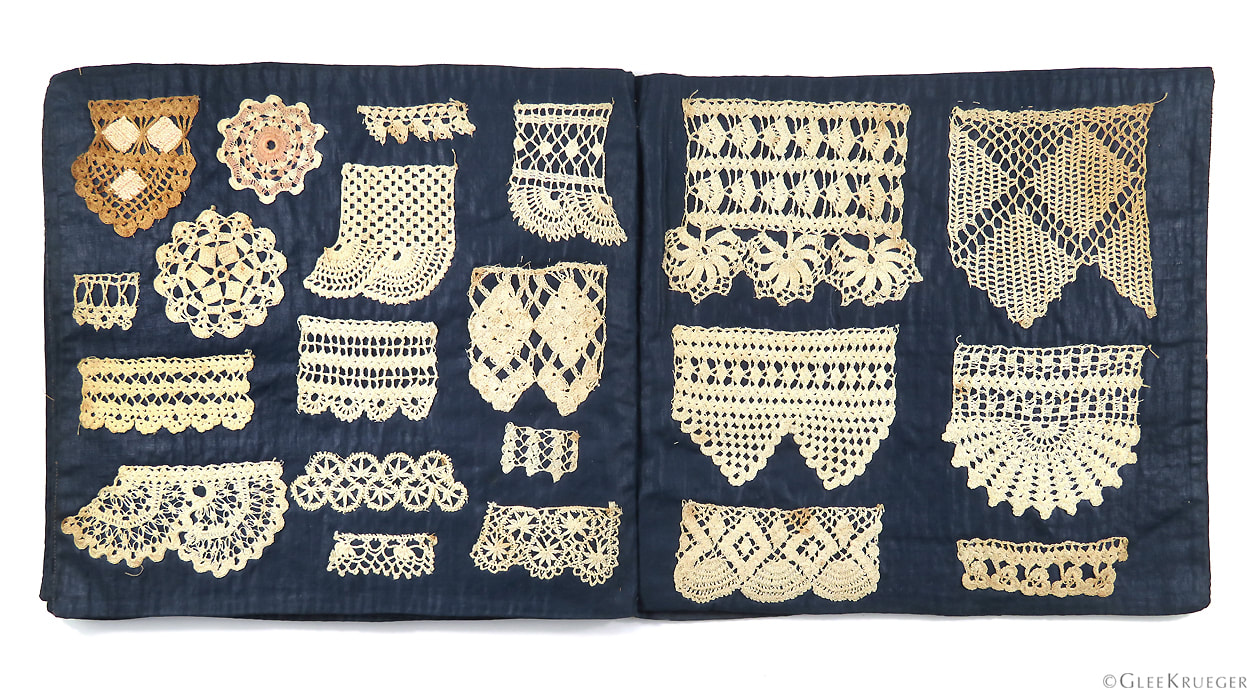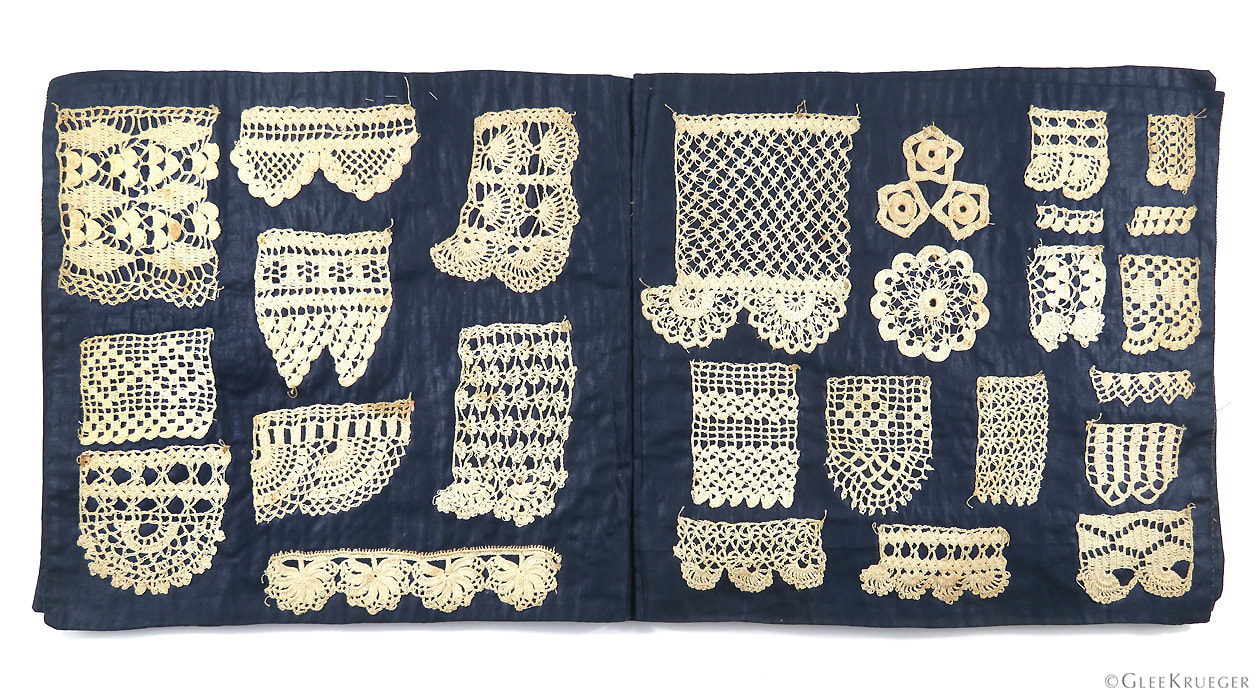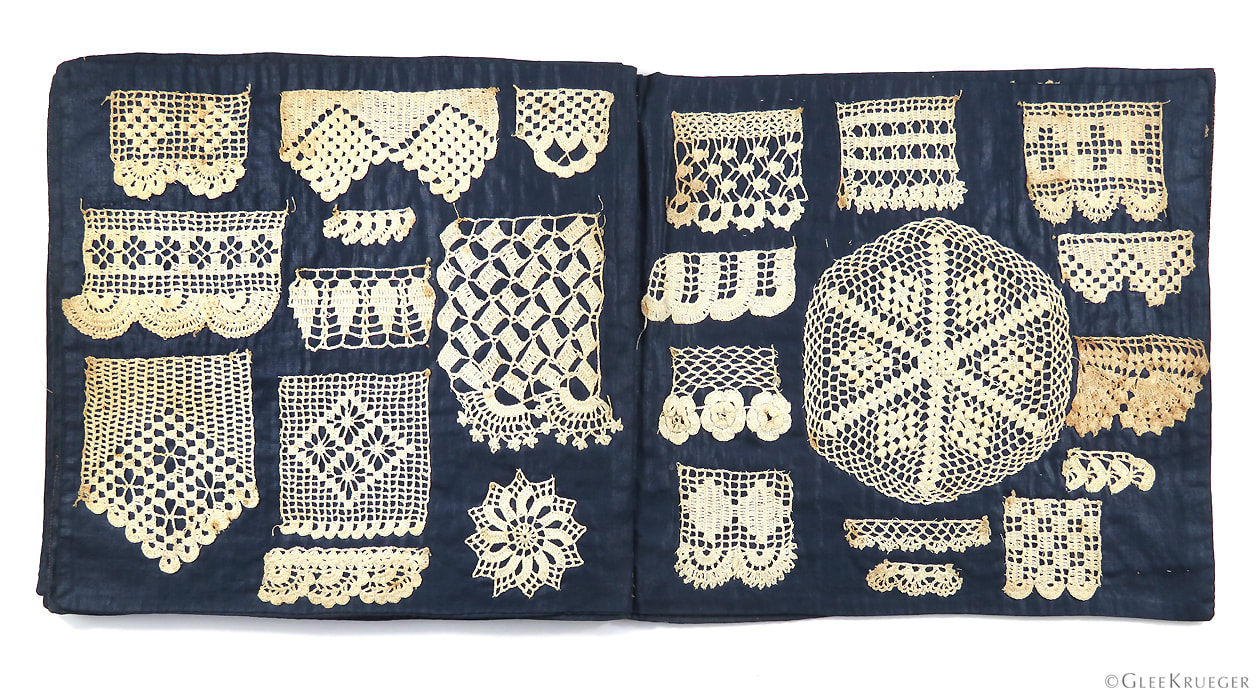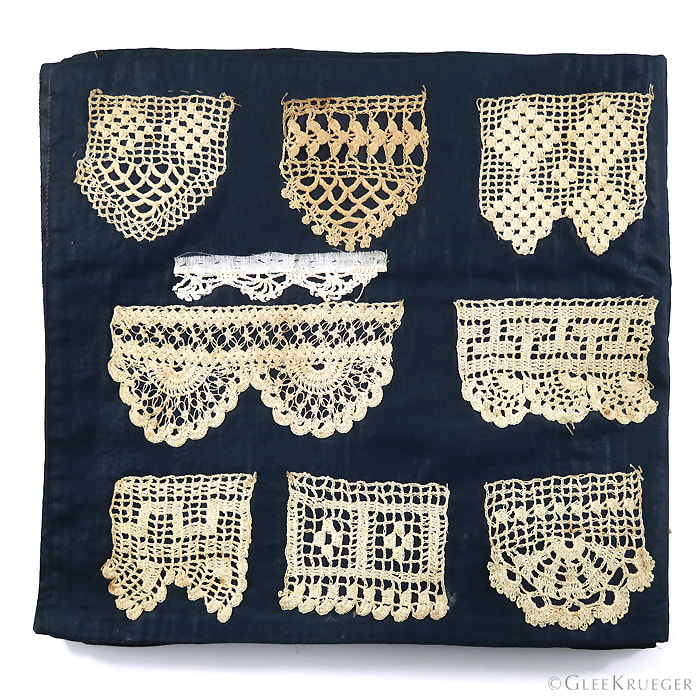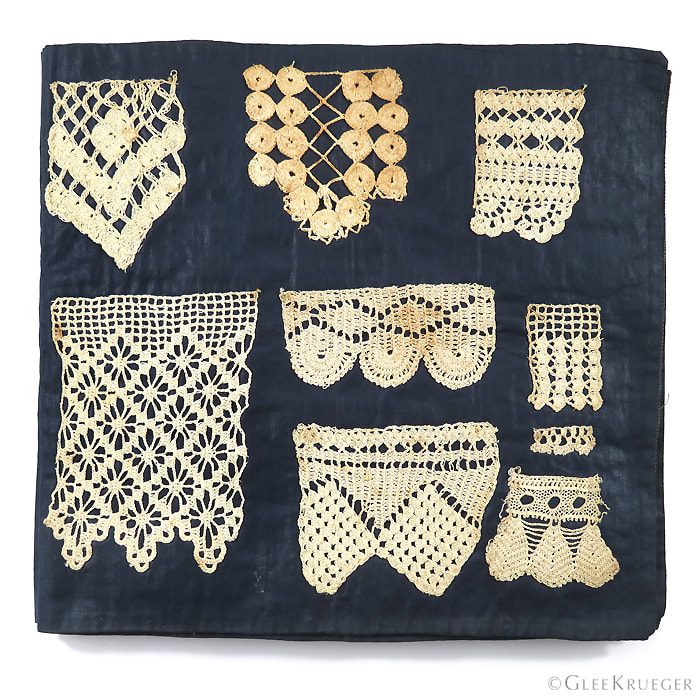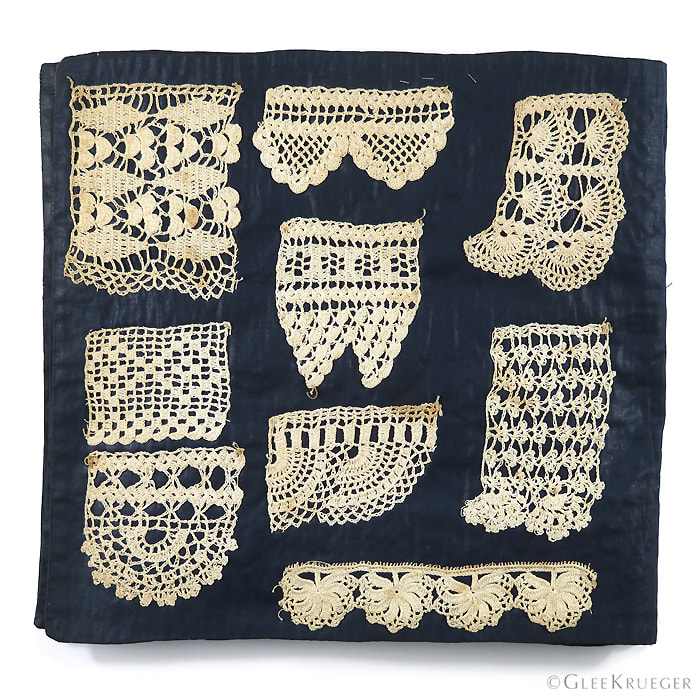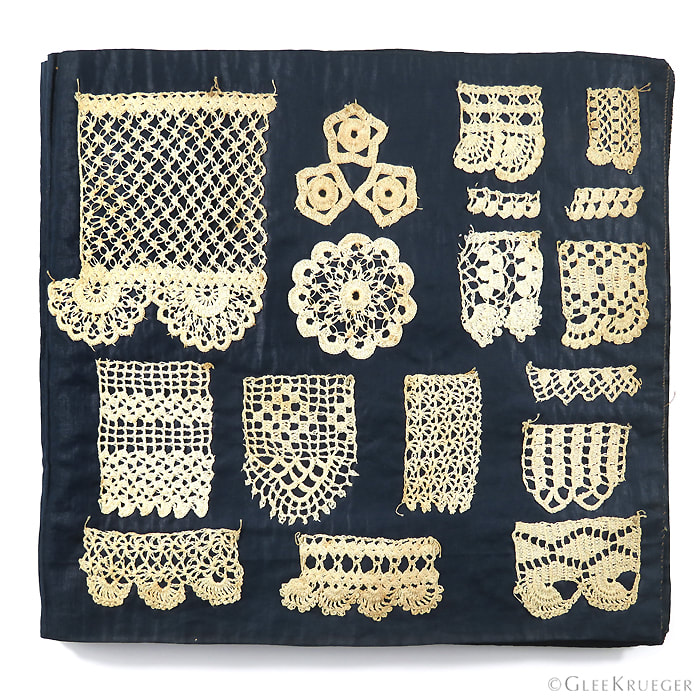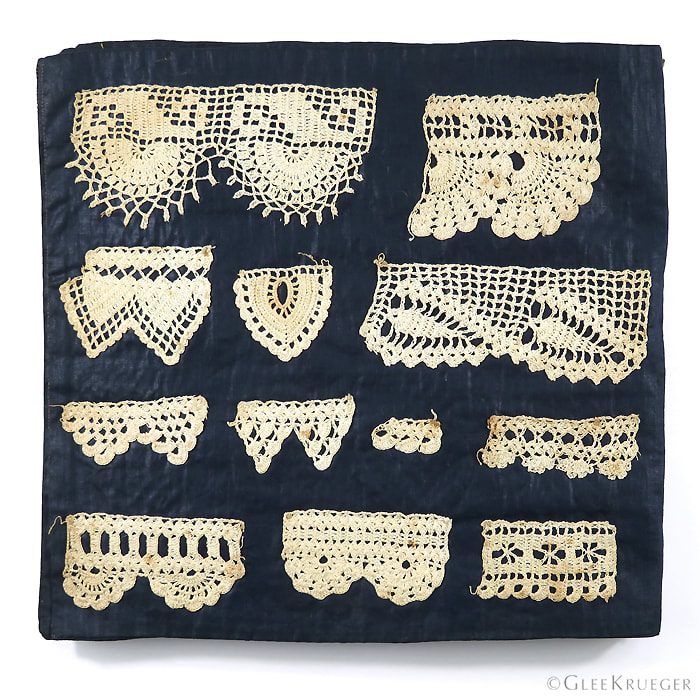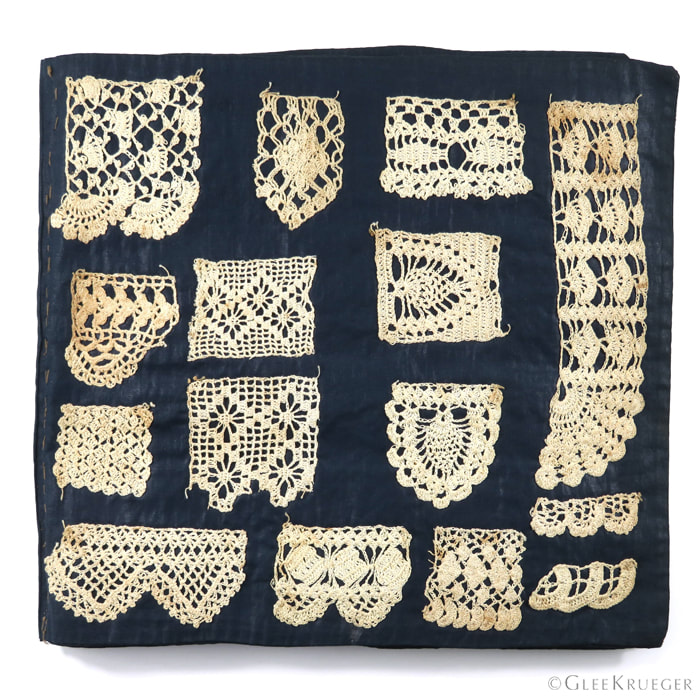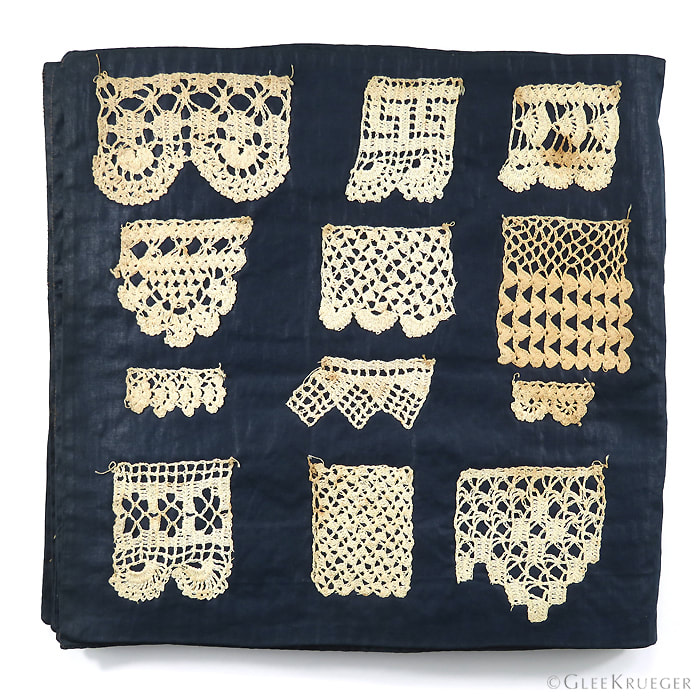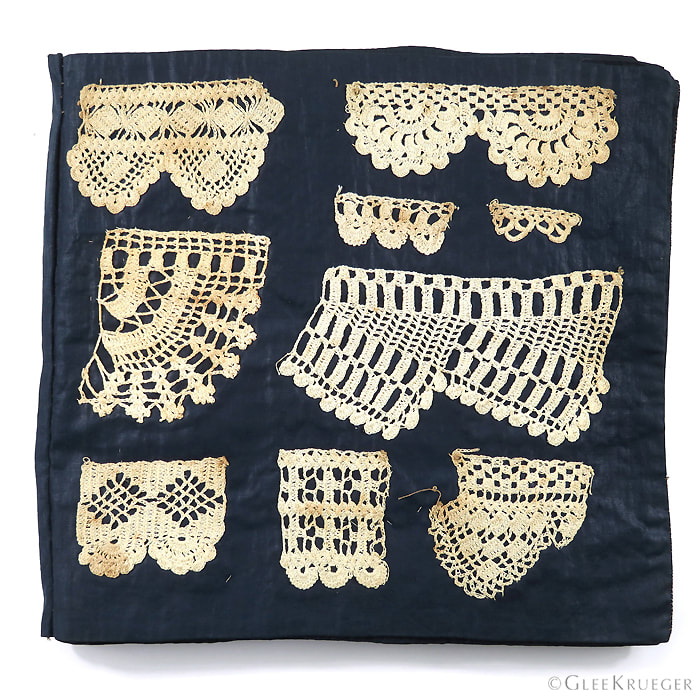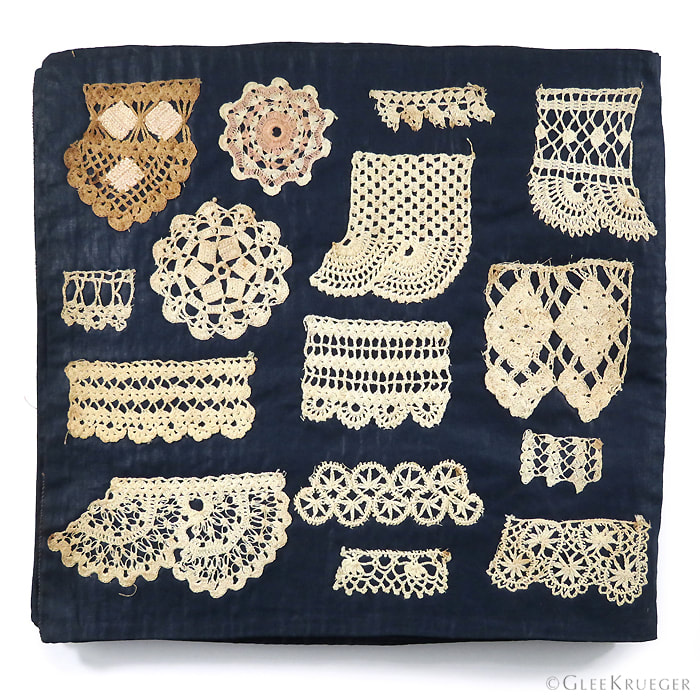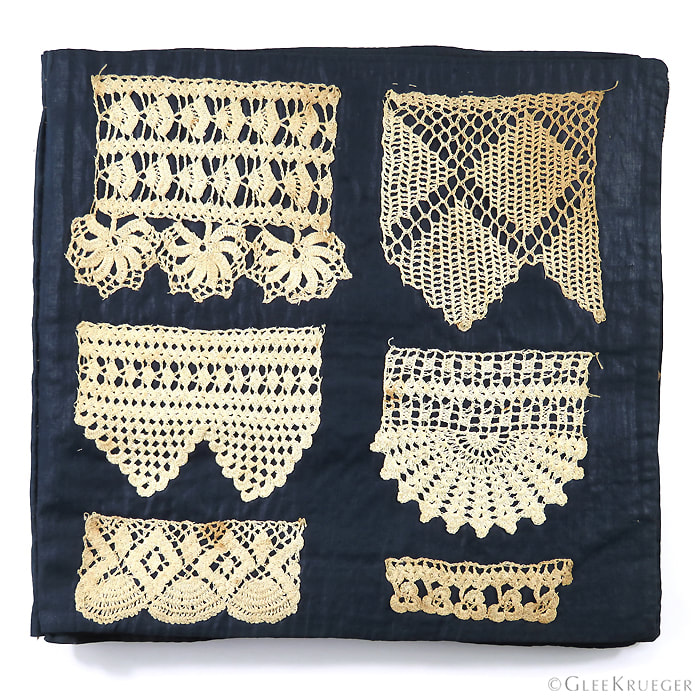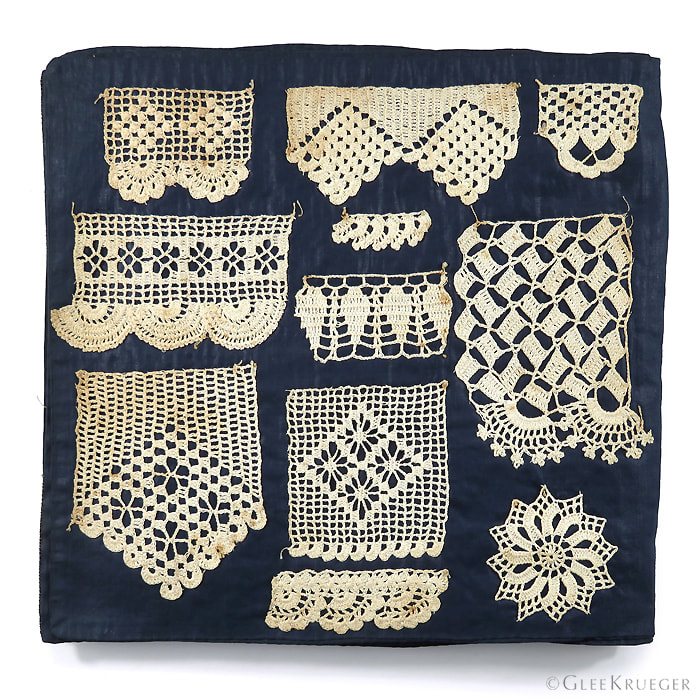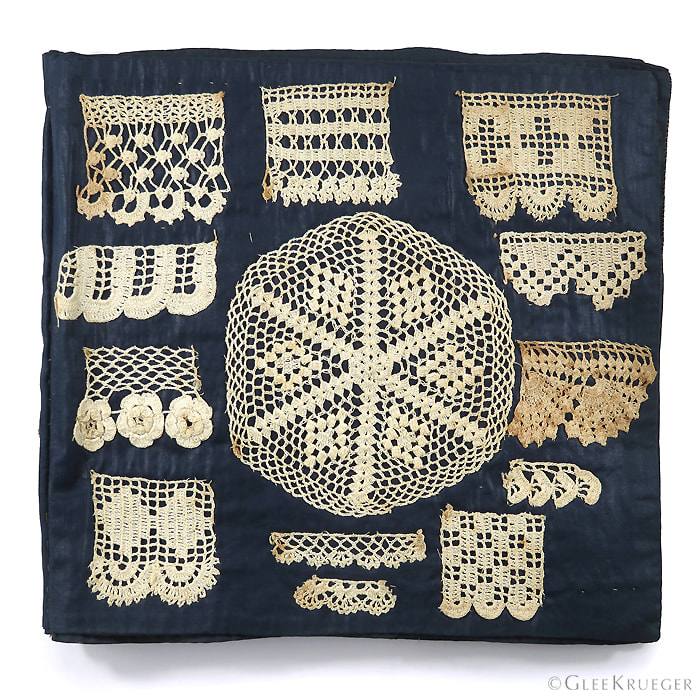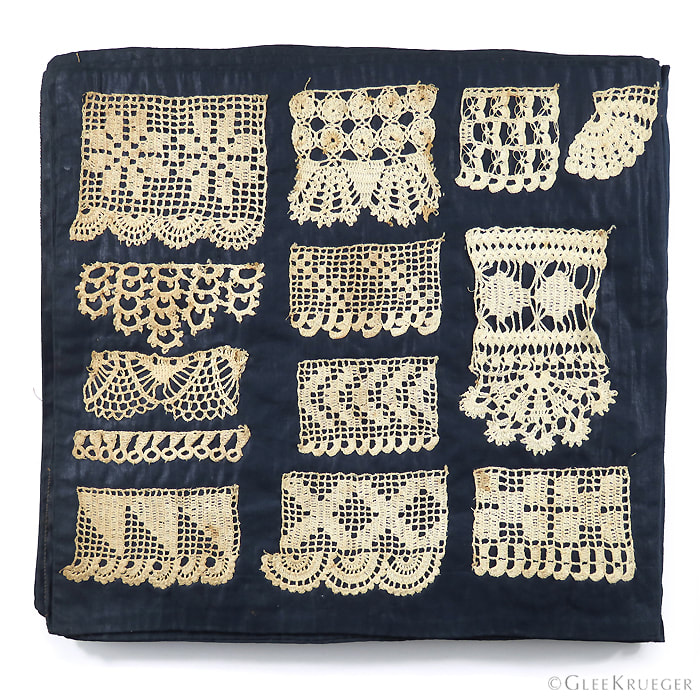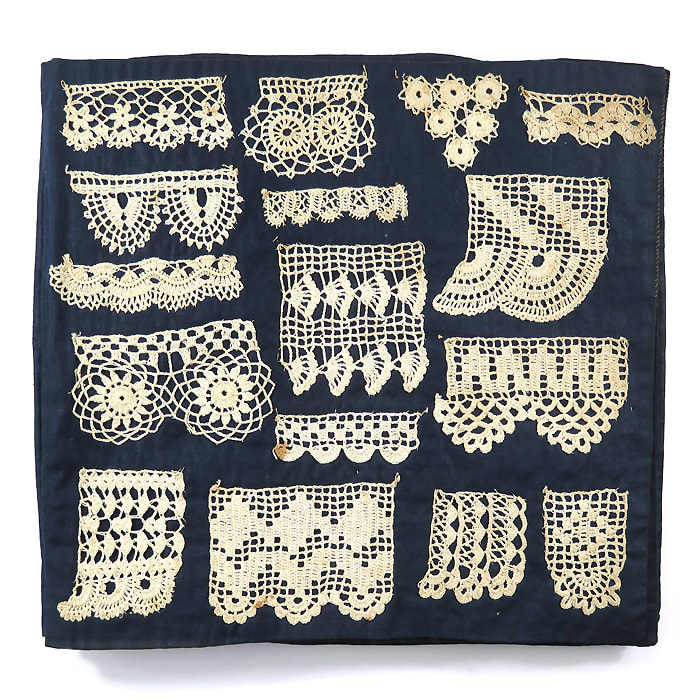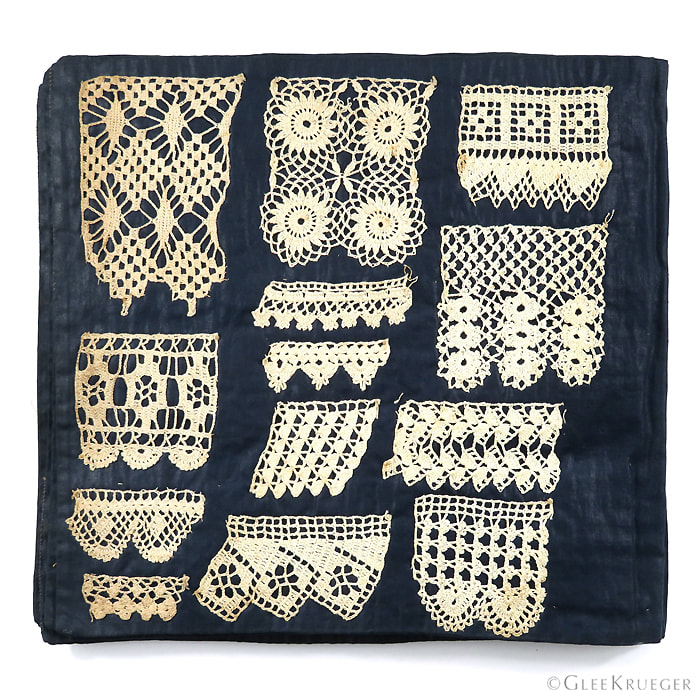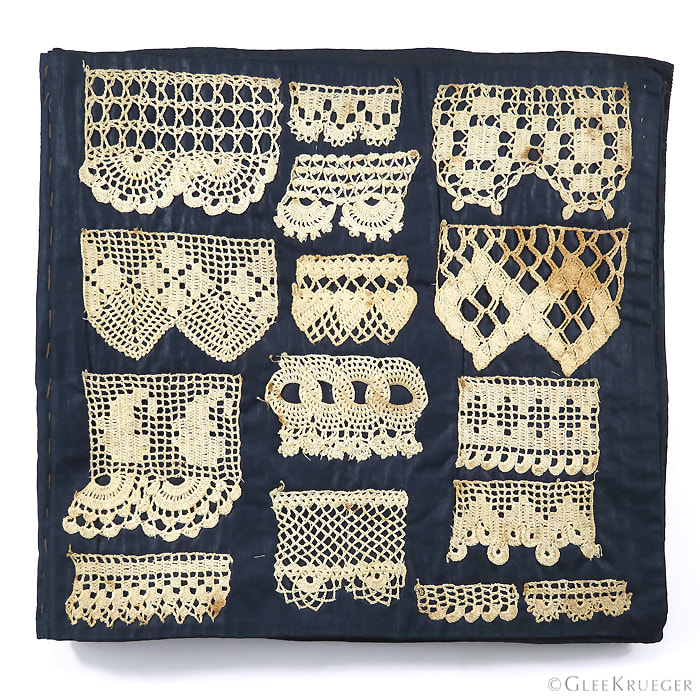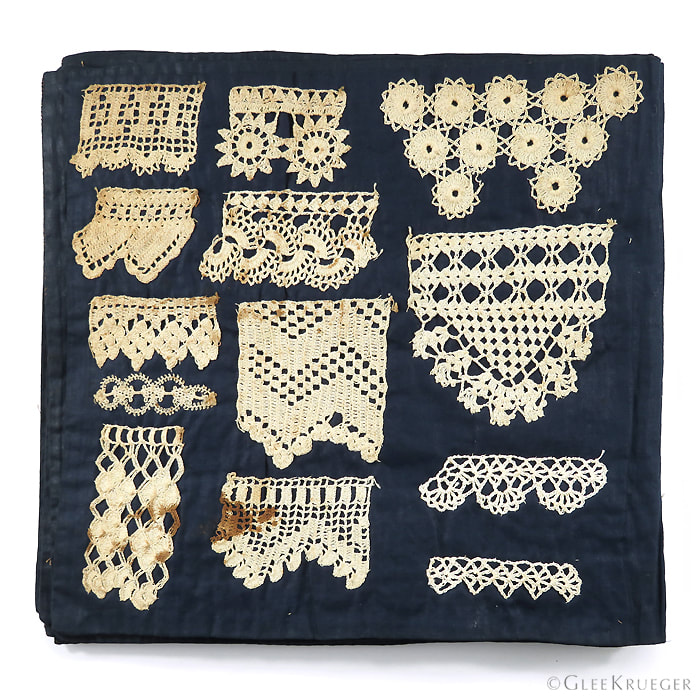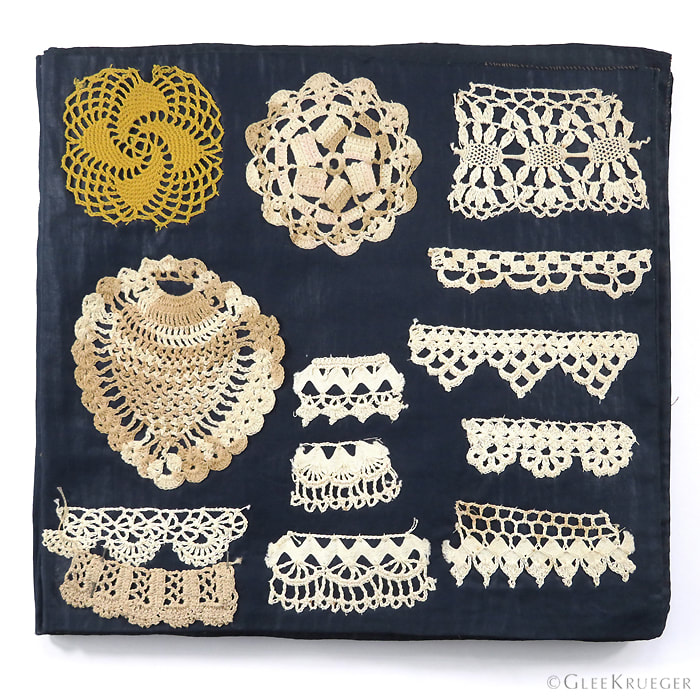220 samples are hand stitched to 19 GLAZED cotton INDIGO DYED pages
Crochet sample books were an early way to keep a record of one's stitch patterns.
Each sample pattern was carefully sewn into the cotton book as a way
of creating a personal library, or archive, of edgings, motifs, netting, and lace.
Prior to published pattern books, this was a common method in which to share
designs with students, friends, and family members.
c. 1850s
Each of the "recipes", as patterns were known back then,
reflects a unique study of motif development through the interstices between stitches.
Using chain, single, half double, double, and triple stitches to create
shells, blocks, clusters, bobbles, cables, honeycomb, basket weaves, and waffles.
As recipes were combined, medallions, stars, doilies, and lace would emerge.
Several examples of crochet "sampler" books can be seen
in the textile collections of the Victoria & Albert and Cooper Hewitt
in the textile collections of the Victoria & Albert and Cooper Hewitt
